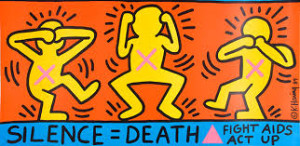The commonalities between the early years of the AIDS epidemic and the current epidemic of drug addiction are impossible to ignore any further; we simply can’t afford to anymore – both literally and figuratively. Addiction affects roughly 40 million Americans – about 16% of the population and many continue to die from this disease. The fiscal cost of addiction is equally astonishing. Last year, healthcare related to drug addiction and substance abuse cost taxpayers $350 billion, with only 2% of that going to actual preventive care such as rehabilitation and treatment programs. The rest of those monies – 98%, went to “cleaning up” the damage that addiction leaves in its wake.
At one time, HIV and AIDS was considered “the gay man’s disease” and therefore was ignored by society and therefore policymakers. But the gay community came together and engaged in effective activism that changes the AIDS epidemic conversation from taboo to a public health issue – one that was centered on human rights, which led to biomedical breakthroughs and life-saving treatment.
Today, the response to HIV/AIDS has attracted an unprecedented commitment of resources as well as aid on an international scale. Researchers believe that the same response is needed when it comes to the epidemic of addiction.
What History Can Teach Us
We can learn from this movement by speaking out and advocating for ourselves and our fellow addicts and alcoholics. Addiction is a disease, not a symptom of being a bad person. It requires prevention programs, diagnosis, and treatment, like any other chronic disease.
There are accounts as far back as the 1700s in which physicians had classified alcoholism as a disease for which treatment is required. And yet today, more than three centuries later, we are still treating alcoholism and drug addiction as a moral failing – something to be ashamed of.
This negative stigma is detrimental is two major ways: first, it deters the alcoholic and addict who still suffer from getting help which often tragically leads to death for these individuals.
Second, the negative cultural stigma surrounding addiction has successfully kept us “in the shadows” so to speak and therefore allows society to continue to look the other way while more and more people fall victim to this disease. That is, it seems perfectly alright that addiction is not considered to be a public health concern.
Addiction to drugs, alcohol and tobacco has a greater public impact than heart conditions, diabetes or cancer combined. Currently, addiction affects 1 in 3 American families.
Specifically, opiate addiction is the fastest-growing type of drug problem, which is largely due to explosion of widely available, potent prescription painkillers. Prescription drugs like oxycodone (Oxycontin), hydrocodone (Vicodin), and morphine now kill more people than heroin and cocaine combined. And right now, every 19 minutes another American dies from an unintentional overdose.
And although addiction is so prevalent, it has been – and continues to be – marginalized as a social problem thereby distinguishing it as somehow different from other diseases. This has effectively created barriers to treatment, such as requiring narrow and stringent criteria for eligibility for treatment to overall limited availability of treatment.
How the AIDS Movement Serves as a Model
Just as HIV/AIDS affected young and previously healthy individuals who were then stigmatized once diagnosed with the disease, so too are many victims of addiction. And just like with AIDS, there is a public perception that only certain groups become addicts. Furthermore, the death toll of each epidemic is comparable to one another yet the response to addiction remains ineffective.
There remains great need for a comprehensive prevention, diagnosis and treatment campaign to counteract the rate of overdose as well as a need to use existing evidence to establish a standard-of-care for treatment models. Researchers assert that there is a need for more education for the medical community and that educational resources for addiction in medical training should be as extensive and up-to-date as those for other chronic diseases. Lastly, researchers see the importance that, just as with HIV/AIDS patients, those suffering from addiction should be involved in the design and implementation of treatment programs and products developed to treat them.
If you or someone you love is struggling with substance abuse or addiction, please call toll-free 1-800-951-6135.
Sources:
http://www.sciencedaily.com/releases/2014/04/140401162205.htm
http://en.wikipedia.org/wiki/Disease_theory_of_alcoholism




